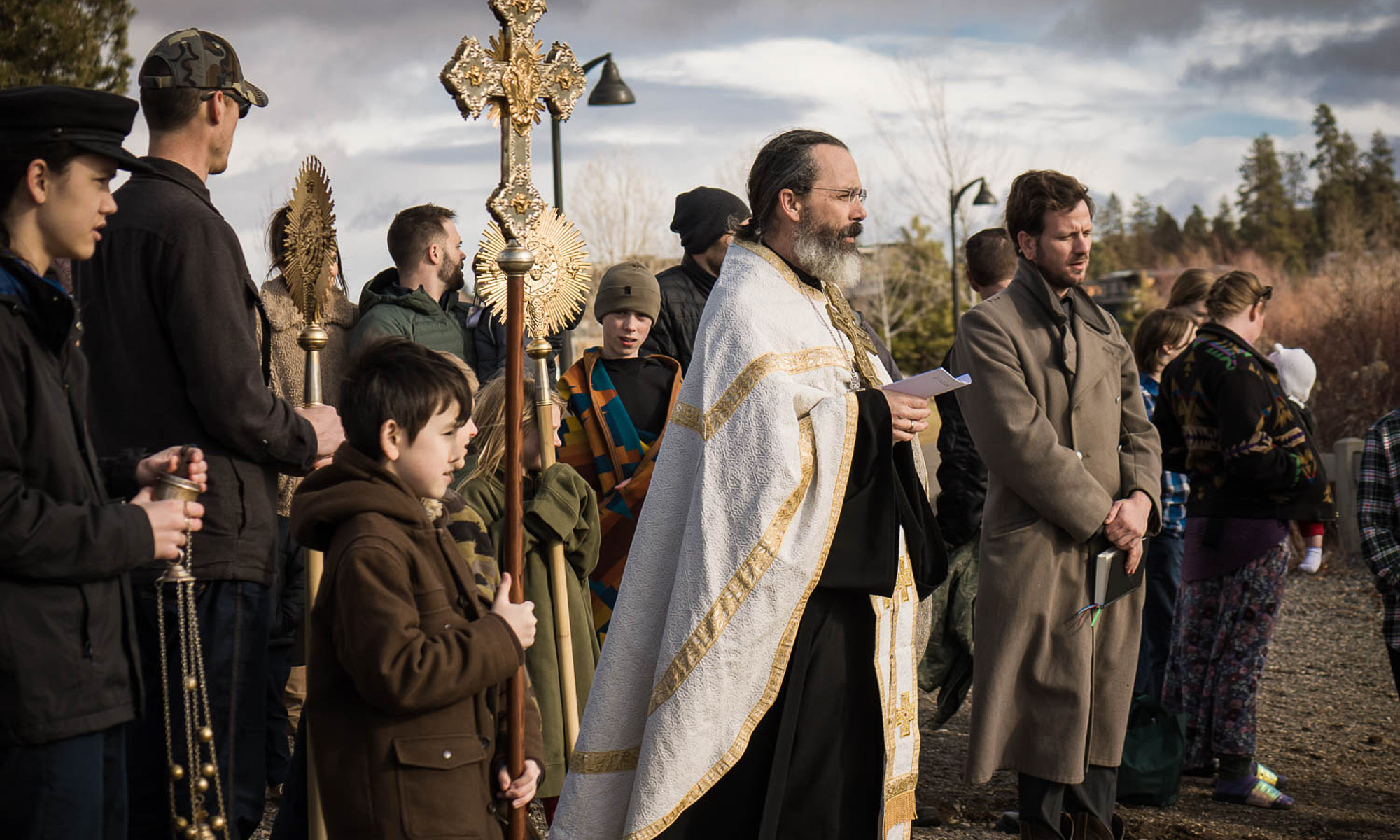We welcome all to come and celebrate the work of Salvation that culminates in the Resurrection of Our Lord, God and Savior Jesus Christ. In the Orthodox Church the last week of Christ’s life is officially called Passion Week. In popular terminology, it is called Holy Week. Each day is designated in the service books as “Great and Holy”, with special services every day of the week for the faithful as they “go up with the Lord to Jerusalem” (Matins of Great and Holy Monday). His institution of the Last Supper, His Passion in the Garden, the Betrayal, Scourging, the end of His Earthly Life on the Cross, His Burial and the Lamentations become the focus of our worship, prayer and contemplation during the Divine Services offered in anticipation of the Rising of Christ. All turns to joy, as we begin the Midnight Office in the dark, then candle light procession follows as we visit His Empty Tomb and a world illuminated by the Uncreated Light of His Life-giving Resurrection – the Holy and Glorious PASCHA of our Lord!!
Following is a short summary of the meaning of the services, with a schedule so you can plan your week and hopefully attend as many as possible.
Schedule of Services & Their Meaning
March 31, 8:00 am 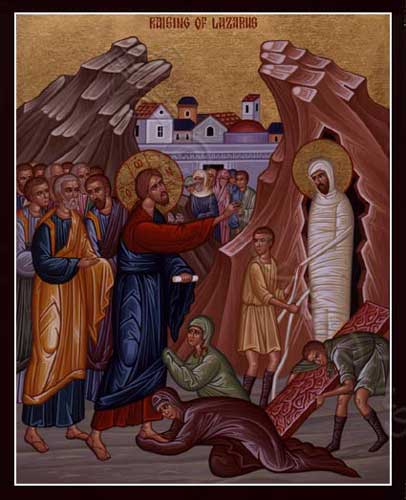 – Matins, followed by
– Matins, followed by
9:30 am – Divine Liturgy of Lazarus Saturday
On this day, the rising from the dead of St. Lazarus, the righteous friend of Christ, is celebrated. Lazarus Saturday is a Paschal celebration. It is the only time in the entire Church Year that the Resurrectional Service of Sunday is celebrated on another day. At the liturgy of Lazarus Saturday, the Church glorifies Christ as “the Resurrection and the Life” who, by raising Lazarus, has confirmed the universal resurrection of mankind even before his own suffering and death.
March 31, 6:00 pm – Saturday Evening Great Vespers of Palm Sunday
April 1, 8:30 am – Matins, with Blessing of the Palms (9:45 am)
At the vigil of the feast of Palm Sunday the prophecies of the Old Testament about the Messiah-King are read together with the Gospel accounts of the entry of Christ into Jerusalem. At Matins branches are blessed which the people carry throughout the celebration as the sign of their own glorification of Jesus as Savior and King.
April 1, 10:00 am – Palm Sunday Divine Liturgy
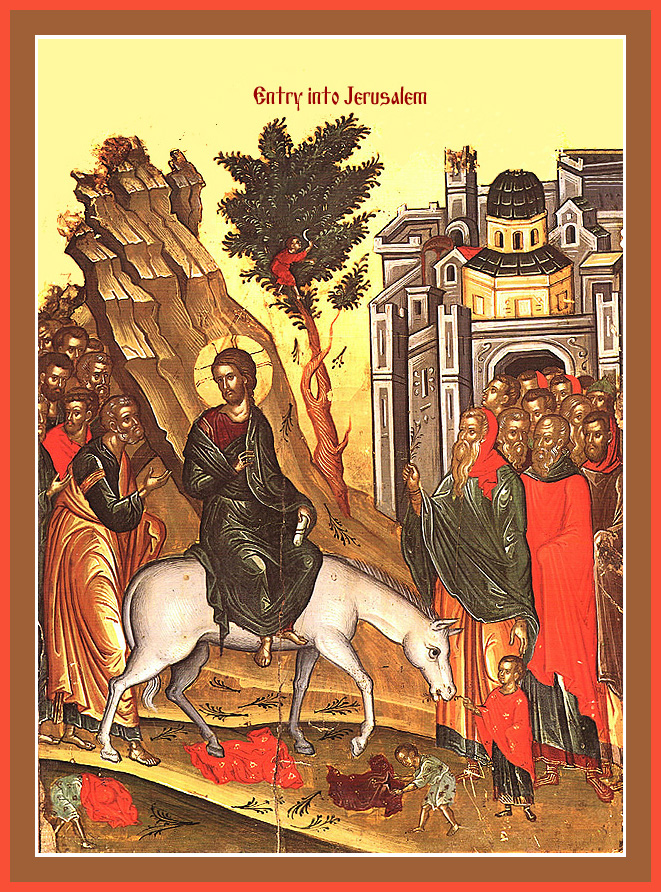
Because of the resurrection of Lazarus from the dead, Christ was hailed by the masses as the long-expected Messiah-King of Israel. Thus, in fulfillment of the prophecies of the Old Testament, He entered Jerusalem, the City of the King, riding on the colt of an ass (Zech 9.9; Jn 12.12). The crowds greeted Him with branches in their hands and called out to Him with shouts of praise: Hosanna! Blessed is He who comes in the name of the Lord! The Son of David! The King of Israel! Because of this glorification by the people, the priests and scribes were finally driven “to destroy Him, to put Him to death” (Lk 19.47; Jn 11.53, 12.10).
April 1, 6:00 pm – Holy Sunday Evening
Bridegroom Matins
“ . . men loved darkness rather than light” The services of Holy Week begin with three days devoted to the final discourses of Christ, speaking with clarity of the end of the age. Two themes, Darkness brings Judgment, are combined in the Troparia of these three days that begin with: “Behold, the Bride Groom cometh, in the middle of the night . . . “, proclaiming that the nighttime, or darkness of “the world”, is the time for Christians to keep vigil, to watch and pray.
April 2, 6:30 pm – Holy Monday
Liturgy of Presanctified Gifts / Bridegroom Matins
The theme for Monday is that of the sterile fig tree which yields no fruit and is condemned.
April 3, 6:30 pm – Holy Tuesday
Liturgy of Presanctified Gifts / Bridegroom Matins
On Tuesday the accent is on the vigilance of the wise virgins who, unlike their foolish sisters, were ready when the Lord came to them.
April 4, 6:30 pm – Holy Wednesday
Liturgy of Presanctified Gifts / Bridegroom Matins
Wednesday the focus is on the fallen woman who repents. Great emphasis is made in the liturgical services to compare the woman, a sinful harlot who is saved, to Judas, a chosen apostle who is lost. The one gives her wealth to Christ and kisses his feet; the other betrays Christ for money with a kiss.
April 5, 2:00 pm – Holy Thursday Institution of the Eucharist,
Vesperal Liturgy of St Basil
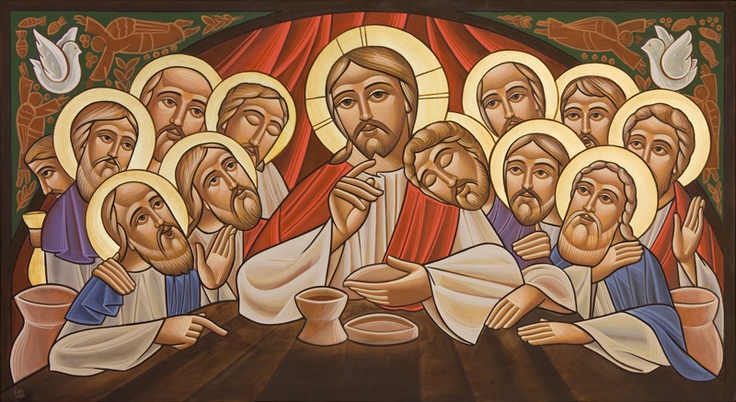
“Do this in remembrance of Me…….” The Last Supper was the Passover Supper which Christ celebrated with his twelve apostles. The main theme of the day is the meal itself at which Christ commanded that the Passover of the New Covenant be eaten in remembrance of himself, of his body broken and his blood shed for the remission of sins. In addition, Judas’ betrayal and Christ’s washing of his disciples’ feet is also central to the liturgical commemoration of the day.
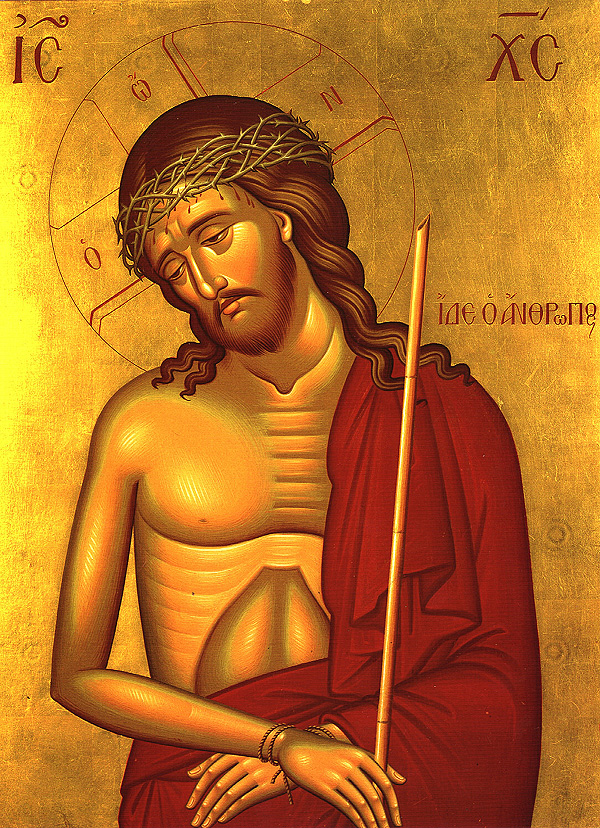 April 5, 6:30 pm – Holy Thursday Evening Matins,
April 5, 6:30 pm – Holy Thursday Evening Matins,
The Holy and Redeeming Passion of our Lord with the Reading of the 12 Passion Gospels
“We worship Thy passion, O Christ……” Good Friday celebrates the holy, saving and awesome Passion of Christ at which the twelve Passion Gospels are read. To take away our sins, Christ willingly endured the spittings, scourgings, buffetings, scorn, mocking and the purple robe; the reed, sponge, vinegar, nails, spear and, above all, the Cross and Death. The confession from the cross of the penitent thief, crucified with Christ, is celebrated. This content of the service is dramatic and deeply moving for the devout Christian. Participation in the prayers and the historical sequence of the events, as related in the Gospels and hymns, provides a vivid foundation for the great events yet to come.
April 6, 9:00 am – Holy Friday Morning Royal Hours
“They cast lots upon my vesture…….” According to the Hebrew custom, the “Royal Hours”, four in number, are read at this time. These services consist of hymns, psalms, and readings from the Old and New Testaments, all related prophetically and ethically to the Person of Christ. The entire day is a strict day of fasting from all foods and drink, as we remember the events of his Crucifixion, Death and Burial.
April 6, 4:00 pm – Holy Friday Afternoon
Taking down from the Cross
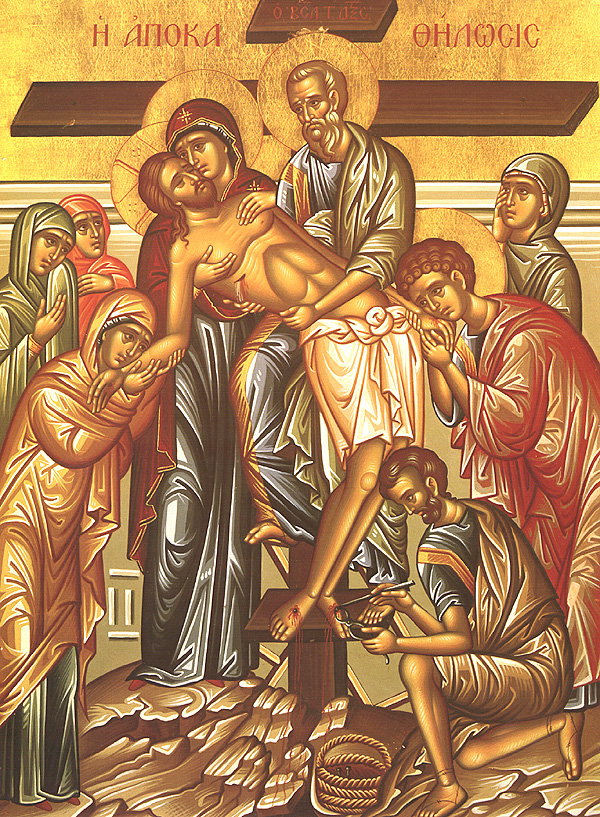
“Father forgive them for they know not what they do…….” During this service, the removal of the Body of Christ from the Cross is commemorated with a sense of mourning for the terrible events which took place. Once more, excerpts from the Old Testament are read together with hymns, and again the entire story is related, followed by the removal from the Cross and the wrapping of the Body of Christ with a white sheet as did Joseph of Arimathea. As the priest reads the Gospel, “and taking the body, Joseph wrapped it in a white cloth”, he removes the Body of Christ from the Cross, wraps It in a white cloth and takes It to the altar. Good Friday is the only day in the year on which the Divine Liturgy is not officiated.
April 6, 7:00 pm – Holy Friday Evening Matins,
The Lamentations
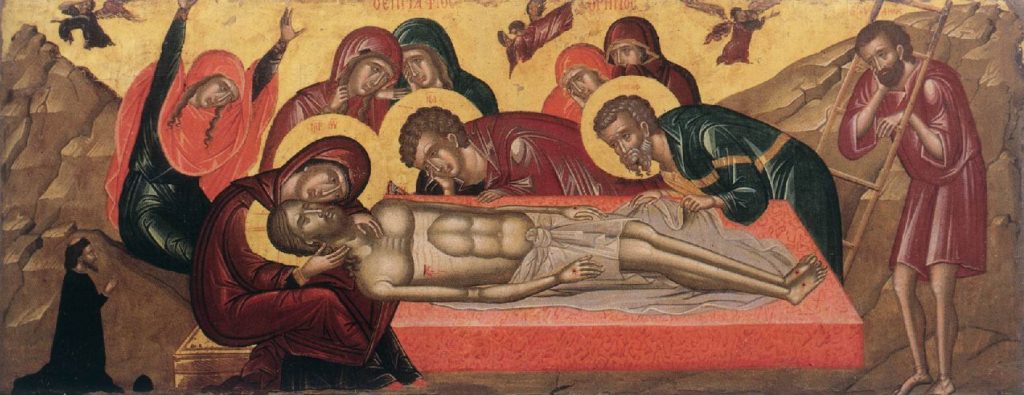
“Do not weep for me, but weep for yourselves”. It consists of psalms, hymns and readings, dealing with the death of Christ, in contrast to His divinity, and in expectation of His Resurrection. The thoughtful, and well-written Odes compare the Compassion of God and the cruelty of man; the Might of God and the moral weakness of man. The Odes picture all Creation trembling when witnessing its Creator hung by His own creatures: “Creation was moved . . . with intense astonishment when it beheld Thee hung in Golgotha”. During this service the Body of Christ is carried in procession around the church. There is a simultaneous praise of both the Crucifixion and Resurrection of Christ with their purpose of the redemption of man. We no longer lament the sufferings of the Crucified One; we now lament chiefly for our own sins because we are far from God. So these services should have a rather personal meaning of repentance and of strong faith in God. Christians observe Good Friday with strict fasting, prayer, cleanliness, self-examination, confession and good works, in humility and, repentance so that the Grace of the Cross might descend upon them.
April 7, 11:15 pm – Holy Saturday Midnight Office
The faithful gather in the darkened church building, in anticipation of the midnight hour in when the celebration of the Resurrection of our Lord and Savior Jesus Christ begins. Hearing the divine service of the Midnight Office of Holy Pascha, we stand in silence to prepare ourselves for the journey to the Tomb of Life, and the coming Light of His Resurrection.
April 8, 12:00 am – Great & Holy PASCHA: Matins, Divine Liturgy & Blessing of Pascha Baskets, followed by Pascha Feast
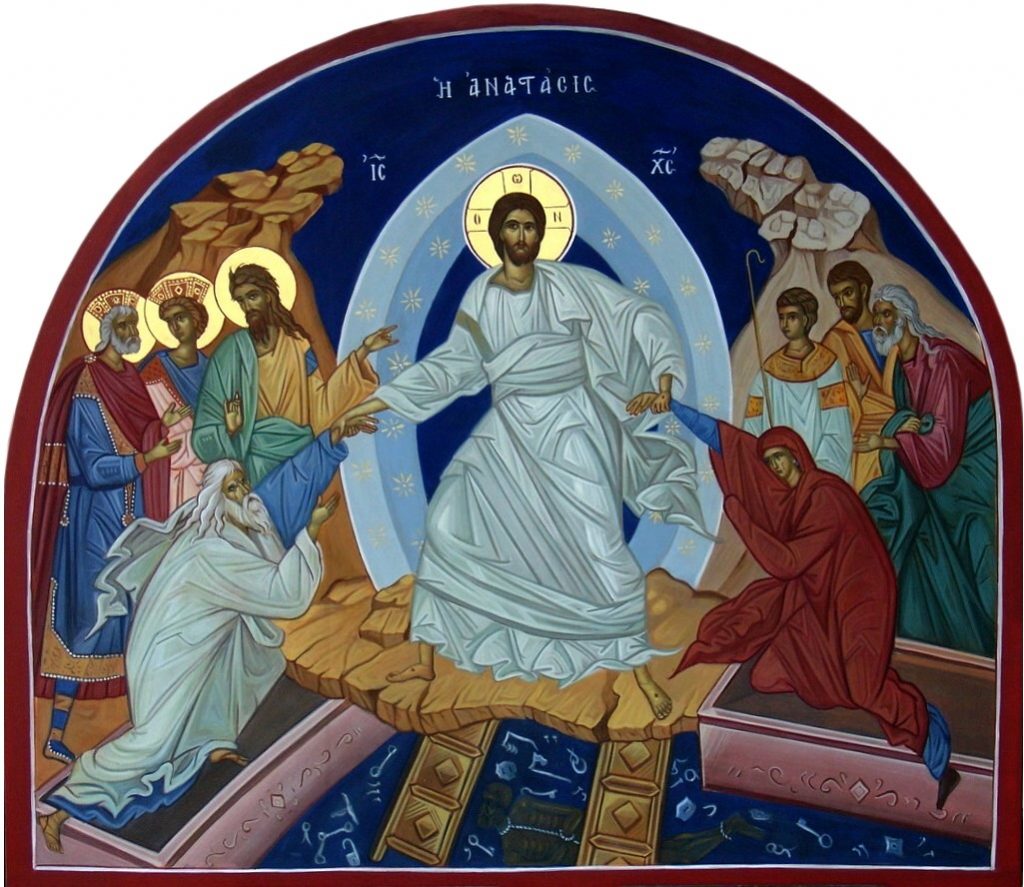
On Pascha Sunday (soon after Saturday, midnight) the life-giving Resurrection of our Lord and Savior Jesus Christ is celebrated. The priest takes light from the vigil light and gives it to the faithful, who are holding candles. The priest sings: “Come ye and receive light from the unwaning life, and. glorify Christ, who arose from the dead”, and all the people join him in singing this hymn again and again. From this moment, every Christian holds the Paschal candle as a symbol of his vivid, deep faith in the Resurrection of Jesus Christ as Savior. Then comes the breathless moment as the people wait for the priest to start the hymn of Resurrection, which they join him in singing, repeatedly: “Christ is Risen from the dead, trampling down death by Death, and upon the tombs bestowing Life”! From this moment the entire service takes on a joyous Pascha atmosphere. The hymns of the Odes and Praises of Resurrection which follow are of superb meaning and expression. The people confess, “It is the Day of Resurrection, let us be glorious, let us embrace one another and speak to those that hate us; let us forgive all things and so let us cry, Christ has arisen from the dead”. The Divine Liturgy of St. John Chrysostom is then celebrated.
April 8, 2:00 pm – Agape Vespers of Great & Holy PASCHA,
followed by Paschal Feast
“Peace be unto you……..”. Pascha Sunday afternoon the faithful gather once more for prayer with lighted candles. All sing the hymn, “Christ is Risen from the Dead”. The people greet one another joyously, saying: “Christ is Risen”, the Pascha salutation which is answered, “Truly He is Risen”. They sing, “the dark shadows of the Law has passed away by the coming of grace”, and standing in exaltation they exclaim, “Who is so great a God as our God?”.
Thus begins Bright Week, free of fasting, with the Royal Doors open wide in celebration of the empty Tomb from now until Thomas Sunday.
